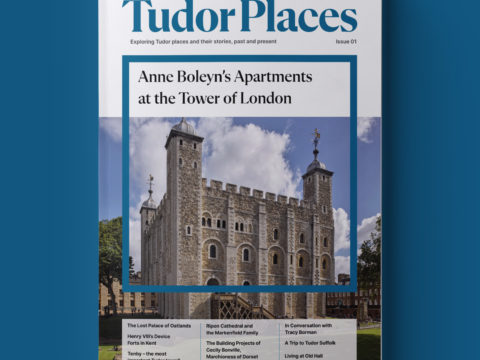Anne of Brittany: Life Story
Chapter 4 : The Italian Dream
In 1494, Charles marched across the Alps into Italy. In so doing, he unleashed sixty years of almost unremitting war in Europe. His dream of French domination of Italy became a nightmare whose repercussions were still being felt until the creation of the modern nation of Italy in the 1860s.
The root of the matter was conflicting claims to two Italian states – the kingdom of Naples in the south, and, later, the Imperial duchy of Milan in the north. Naples had been ruled by descendants of the French royal house, the Angevins, from 1265 to 1435. In 1435, Joanna II, Queen-regnant of Naples died. She had led an extraordinarily eventful life, but had no direct heir. During her reign she had nominated both Alfonso V of Aragon, and Louis of Anjou, or his son René, as her heir at different times. On her death, René (whose daughter, Marguerite, was to become Queen of England as wife to Henry VI) inherited, but he was unable to hold the throne against Alfonso, who already ruled Sicily.
Alfonso received papal recognition (Naples was a papal fief), and agreement that the crown could be inherited by his illegitimate son, Ferrante. Ferrante died in January 1494, to be succeeded by his son, Alphonse. Ferrante had not been popular with either his subjects, or other Italian rulers, and Pope Innocent VIII had already formally deposed him and offered the crown to Charles VIII in 1489 (Charles was René of Anjou’s great-nephew). It was not, however, until the death of Ferrante in January 1494, that Charles chose to pursue the claim.
Charles, like many late-mediaeval kings, had been brought up on a diet of chivalric tales – the exploits of Roland, Arthur and his knights, and the heroics of his ancestor, St Louis IX, in the crusades. These combined to give him a sense of destiny, in particular, a duty to resist the perceived threat to Italy of the Ottoman Turks. He also had a strong interest in military affairs in general.
None of Charles’ councillors were impressed with his notions of conquering Naples – Anne of Beaujeu also counselled against it. Naples was too far, and it was too risky for the king to go in person. If an expedition had to be mounted, it should be led by someone else. Queen Anne added her voice to those attempting to dissuade Charles, but in vain. There is no evidence that Charles ever listened to his wife on political matters – all actions in her duchy were carried out in his name alone.
The whole matter was summed up by Philip de Commines, who had been Louis XI’s most influential adviser ‘Nothing essential to the conduct of a war was at hand. The king was very young, weak in health, headstrong in will, surrounded by few wise counsellors, and wholly destitute of the necessary money’. According to Commines, Charles borrowed 100,000 francs from the Genovese bank of Sola, at an interest rate of 42%! He was later also obliged to borrow the jewels of Blanche, Duchess of Savoy and pawn them.
Oblivious of the folly of his actions, Charles pressed forward. He and Anne travelled to Lyons, where they made a state entry to the city. Anne, resplendent in a cloth-of-gold gown, trimmed with ermine and diamond buttons, was carried in a coach of crimson velvet, embroidered with ‘A’s, and preceded by six pages, similarly swathed in crimson and gold ‘A’s.
The burghers of Lyons presented Anne with a gold cup, containing medals with Charles on the obverse, and she herself crowned on the reverse. The coins were soon melted down, but silver copies were made. Anne is shown with fleur-de-lis of France, quartered with the ermine tails of Brittany
The time in Lyons was spent preparing for the expedition to Naples, but the time was passed agreeably with jousts and tournaments, in which Charles played a part, as did Louis of Orléans. Whilst based at Lyons, Anne made a state entry into Moulins, where she graciously pardoned a knight who was in prison. The royal couple also visited Grenoble in state, where they stayed nearly a week.
On 9th August 1494 they were at Vienne. Whilst there, Charles granted Anne the chateau of Melun-sur-Yevre (illustrated here in the Très Riches Heures du Duc de Berry, some seventy years before). From the correspondence surrounding the grant, it appears to have been an exchange for a property she already held, as part of her jointure, at Chastillon-sur-Indre. Anne, always business-like, immediately wrote to her officers to take possession of the new property.

